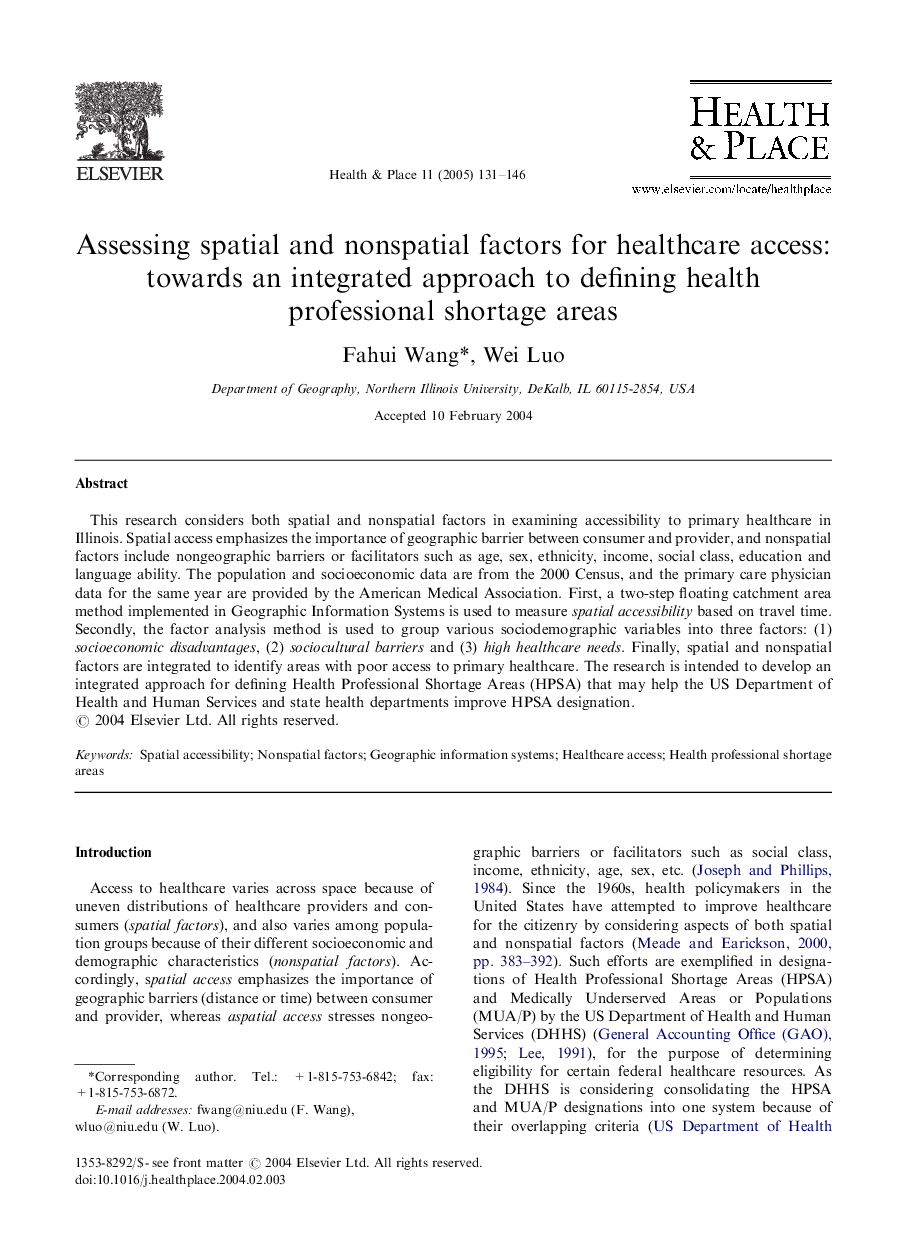| Article ID | Journal | Published Year | Pages | File Type |
|---|---|---|---|---|
| 10503124 | Health & Place | 2005 | 16 Pages |
Abstract
This research considers both spatial and nonspatial factors in examining accessibility to primary healthcare in Illinois. Spatial access emphasizes the importance of geographic barrier between consumer and provider, and nonspatial factors include nongeographic barriers or facilitators such as age, sex, ethnicity, income, social class, education and language ability. The population and socioeconomic data are from the 2000 Census, and the primary care physician data for the same year are provided by the American Medical Association. First, a two-step floating catchment area method implemented in Geographic Information Systems is used to measure spatial accessibility based on travel time. Secondly, the factor analysis method is used to group various sociodemographic variables into three factors: (1) socioeconomic disadvantages, (2) sociocultural barriers and (3) high healthcare needs. Finally, spatial and nonspatial factors are integrated to identify areas with poor access to primary healthcare. The research is intended to develop an integrated approach for defining Health Professional Shortage Areas (HPSA) that may help the US Department of Health and Human Services and state health departments improve HPSA designation.
Related Topics
Health Sciences
Medicine and Dentistry
Public Health and Health Policy
Authors
Fahui Wang, Wei Luo,
